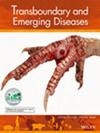Echoes in the Deep: Revealing Influenza A Viruses’ Persistence and Microbial Associations in Aquatic Ecosystems
Abstract
Background
Influenza A viruses (IAVs) are significant pathogens with complex transmission dynamics in aquatic ecosystems, yet their persistence, evolutionary relationships, and associations with environmental microorganisms remain poorly understood. This study aimed to elucidate the phylogenetic characteristics and ecological associations of IAV in freshwater and seawater ecosystems in Eastern China to inform public health strategies.
Methods
Water samples were collected from three freshwater lakes and a coastal seawater site. Viral particles were concentrated, and nucleic acids were extracted for metatranscriptomic and metagenomic sequencing. Phylogenetic analyses, population dynamics assessments, and microbial association networks were constructed using bioinformatic tools. Statistical tests, including Tajima’s D and Fu and Li’s tests, were applied to evaluate evolutionary trends.
Results
IAV fragments in seawater showed high homology with recent human H3N2 strains from North America (2021–2024), while freshwater-derived fragments aligned with historical avian strains from Asia. Microbial association networks revealed significant associations between IAV and environmental bacteria (e.g., Brevundimonas aurantiaca) and fungi (e.g., Thamnidium), implying potential ecological associations that may underpin viral persistence. Freshwater environments with higher abundances of Uroviricota exhibited more frequent IAV detection. PERMANOVA confirmed distinct overall microbial community compositions in IAV-positive versus IAV-negative samples across both freshwater and seawater ecosystems (p < 0.05).
Conclusion
Aquatic ecosystems, particularly freshwater habitats, may serve as reservoirs for IAV persistence and evolution, driven by complex microbial associations. Regional disparities in viral strain origins highlight the role of migratory waterfowl and environmental transmission routes. Integrated surveillance of aquatic IAV dynamics is critical to anticipate zoonotic risks and mitigate future outbreaks.


 求助内容:
求助内容: 应助结果提醒方式:
应助结果提醒方式:


